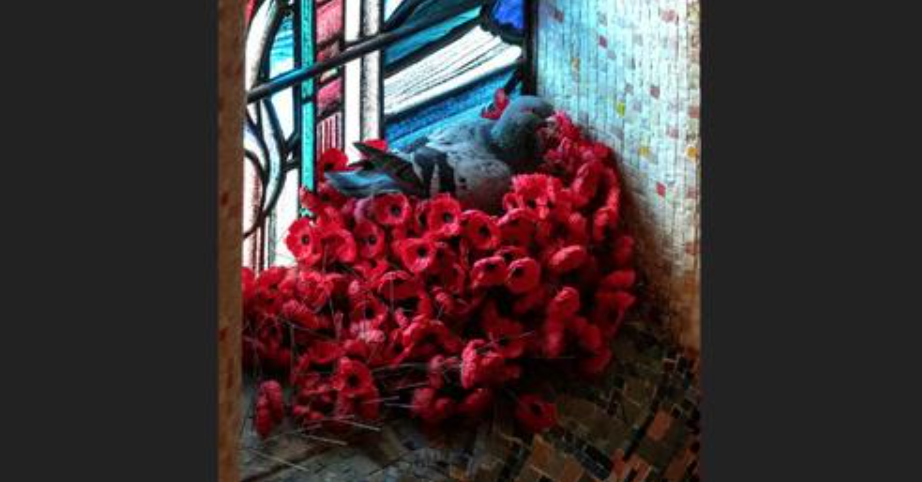A pigeon has captured global attention by using red poppies from the Tomb of the Unknown Australian Soldier to construct her nest. The bird skillfully crafted her nest with the red flowers located in the alcove of a stained glass window at the Australian War Memorial in Canberra, depicting a wounded soldier.
War memorial staff, puzzled by the disappearing fresh poppies placed around the tomb for Remembrance Day, eventually discovered the pigeon’s daily visits. The bird diligently stole the poppies, creating a poignant nest above the stained-glass window in preparation for Remembrance Day.
The symbolism of the pigeon surrounded by red poppies is a powerful representation of the juxtaposition of death and rebirth. Additionally, the pigeon’s presence serves as a reminder of the historical connection between pigeons and soldiers, highlighting their crucial role in wartime communication and life-saving efforts.

“Pigeons have played a significant role in both war and civilian life for centuries”, explained historian Dr. Meleah Hampton. “In discussions about animals in war, they are fulfilling a purpose or performing a task that people can’t easily do on their own… we use pigeons as a solution to our communication problems.”

During wartime, homing pigeons served as military messengers, undertaking perilous missions to relay crucial information. Widely utilized in both World War I and World War II, Australian soldiers in the Pacific especially relied on pigeons due to the limitations of wireless radio technology at the time, which struggled in mountainous terrain and high humidity.
Pigeons also contributed to aerial reconnaissance, carrying cameras to capture images of enemy areas, although this role was less common. One notable war pigeon, Cher Ami, lost a foot and an eye while delivering a message that ultimately saved a large group of American infantrymen surrounded by the enemy during World War I. The legacy of war pigeons stands as a testament to their invaluable contributions, saving numerous lives on the battlefield.
